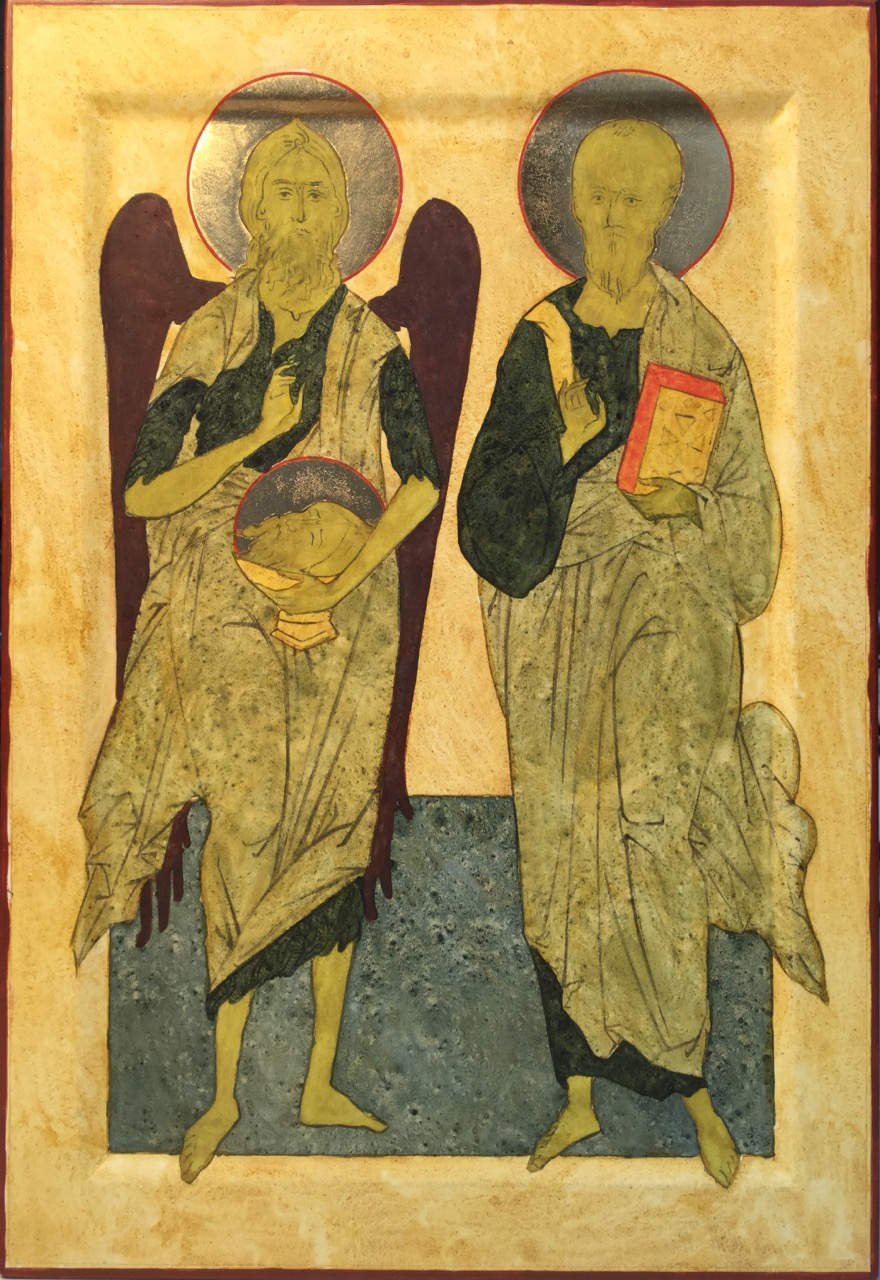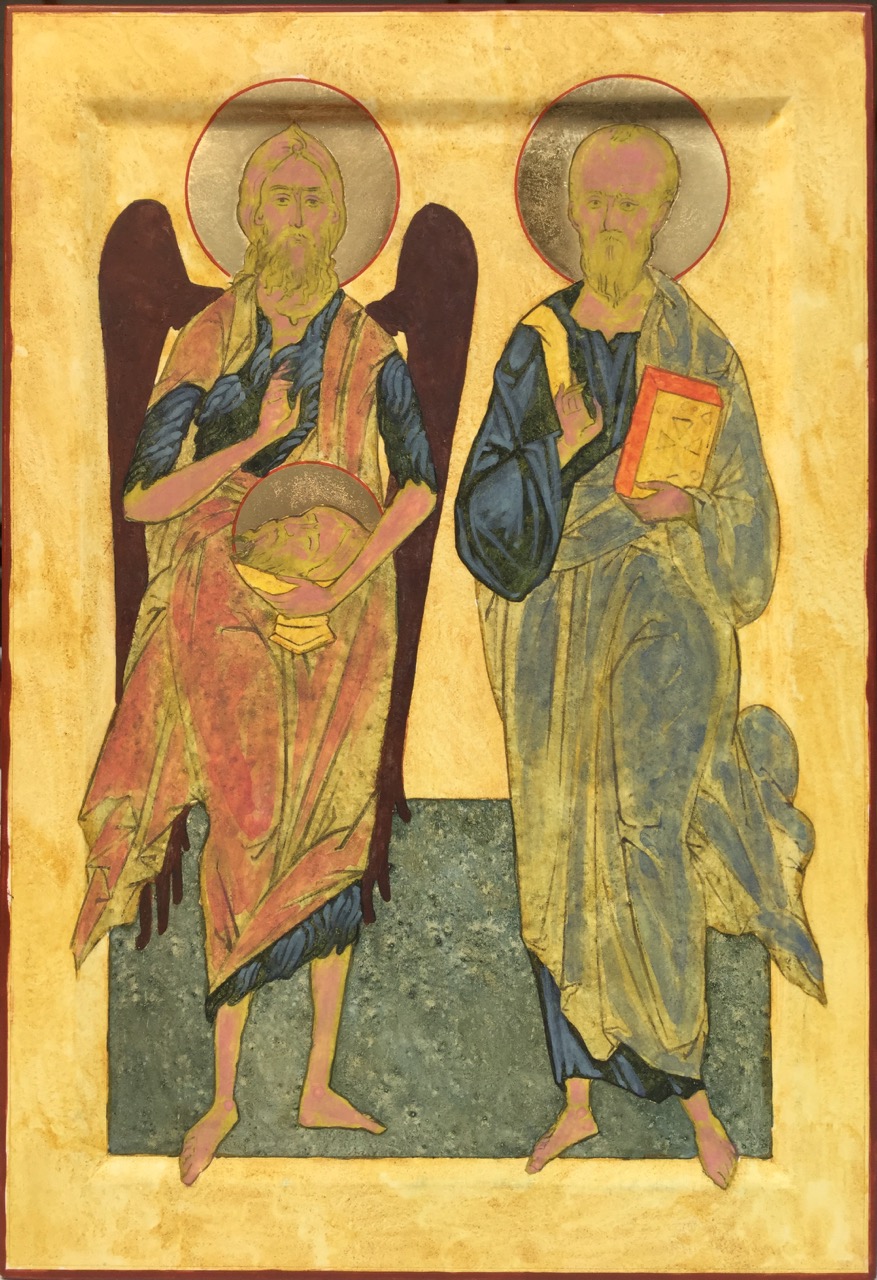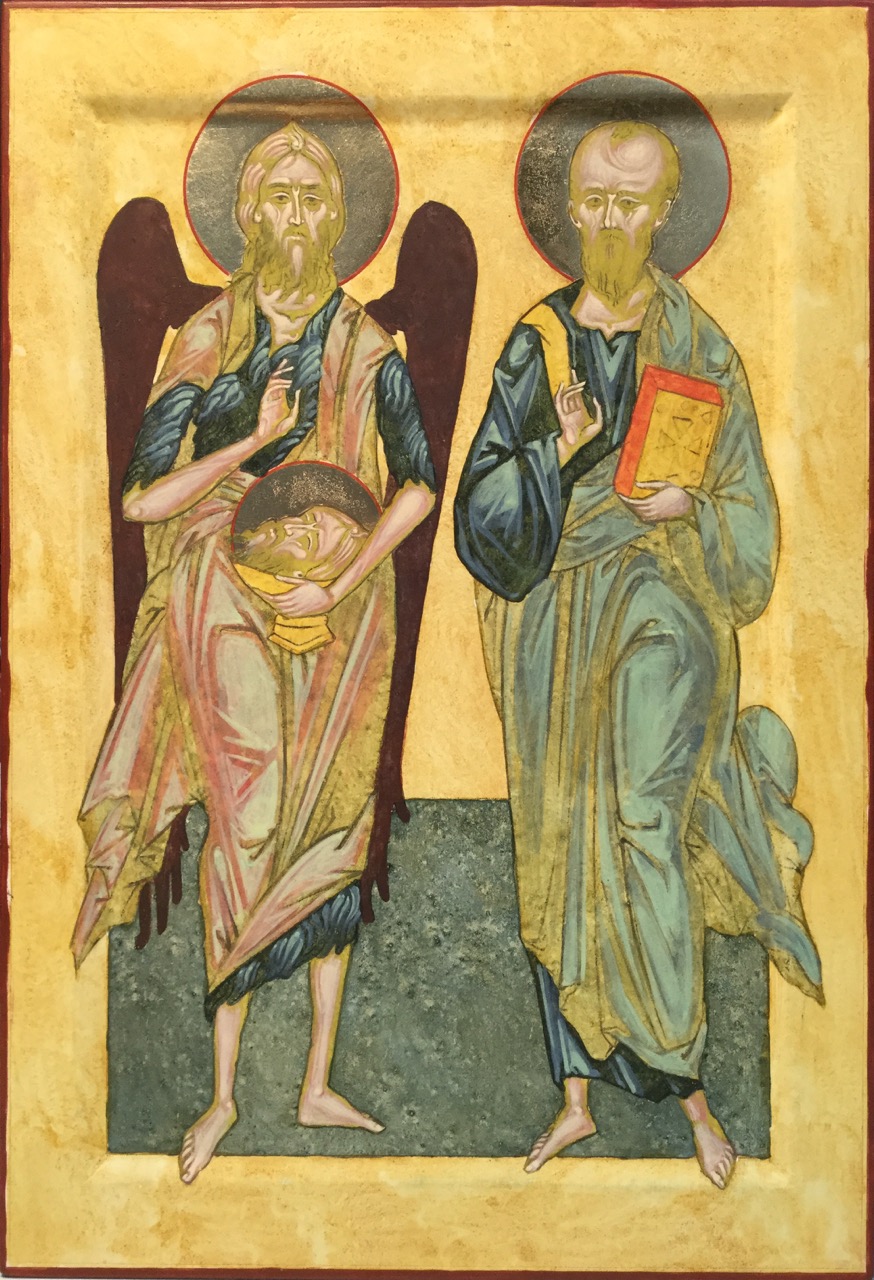





The process of creating an icon using the Prosopon School method requires time. A typical small icon such as the one in this example (selected painting stages shown) requires around six full days of work, excluding the preparation of the wooden panel and the finishing process. First, the drawing is created, refined, and transferred to the board. The necessary areas are then gilded using a special method of applying gold leaf to red clay (bole). The painting process is a search for the balance between color and light, an alternation between stages of highlighting and glazing with liquid color. The first layer of paint (roskrish) is earthy and draws on the natural, living textures produced by the pigments suspended in the egg tempera paint. The characteristic light of iconic garments is crisp and brilliant. It is clothed in rich yet transparent color by means of "floats" or glazes (plav'). On the flesh areas, the task is to indicate an inner light which shows character and is intense, yet gentle. The methods and approach are inspired by fourteenth-fifteenth century Russian icon painting.
The process is one of a hierarchical progression of steps, as in the rituals and liturgical cycles of the Church. It is therefore productive to meditate on the possible spiritual meanings of the various stages of the painting process. Not only the subject matter, but the exegesis, so to speak, of the visuals and techniques of the process leads to a deeper understanding of the icon as a visual image of the wisdom of Christianity.
For the beginning student of the method it is important first and foremost to stay within the rather precise guidelines of the steps of the process and to realise that iconography is a spiritual discipline in which something more universal than the immediate desires of the individual artist is expressed. The discipline of painting, in fact, helps the painter to free himself from the superficial self. The iconographer must keep "receding" to a point of a near silence of thoughts and even brush strokes. In the ideal, the Image of God is to shine forth in the icon of its free accord, with fewest possible "touches" of the artist. On the other hand, the icon also needs to be "charged" with a spiritual content which is palpable even on the level of the materials and techniques used to create it. The icon must speak the Word of God, and this Word is the origin of all life and filled with all possible meaning. Therefore, at the same time, the iconographer must be wary of falling back on a lazy minimalism, which is easy to do given the rather laconic features of the classical icon style.
